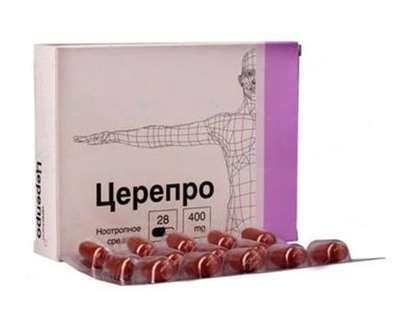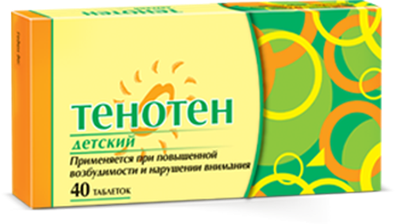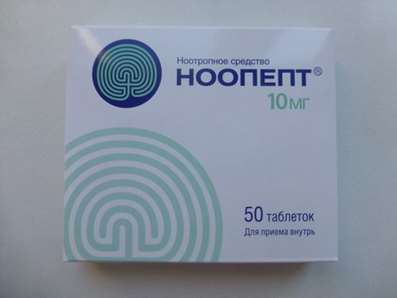Instruction for use: Indapamide 2,5 mg
I want this, give me price
International Nonproprietary Name (INN): Indapamide
Pharmaceutic group: Hypotensive
Presentation:
Film-coated tablets 2.5 mg ¹30.
Available with prescription
Indications for Indapamide
Indapamide is a thiazide-like diuretic drug marketed by Servier, generally used in the treatment of hypertension, as well as decompensated cardiac failure. The US trade name for indapamide is Lozol. Indapamide is marketed as Natrilix outside the US, and as Insig in Australia. Combination preparations with perindopril, lisinopril (an ACE inhibitor antihypertensive) are also available.
INDICATIONS: Hypertension and edema due to congestive heart failure. Indapamide has been proven in the HYVET trial to reduce stroke and all cause mortality when given with or without perindopril to people over the age of 80 for the treatment of hypertension.
The adult DOSAGE in Russia: is from 1.5 to 2.5 mg, orally and once daily, usually in the morning.
CONTRAINDICATIONS. Indapamide is contraindicated in known hypersensitivity to sulfonamides, severe renal failure, hepatic encephalopathy or severe hepatic failure and hypokalemia (low blood potassium levels). There is insufficient safety data to recommend indapamide use in pregnancy or breastfeeding.
INTERACTIONS. Caution is advised in the combination of indapamide with lithium and nonantiarrhythmic drugs causing wave-burst arrhythmia (astemizole, bepridil, IV erythromycin, halofantrine, pentamidine, sultopride, terfenadine, vincamine).
PRECAUTIONS. Monitoring of potassium and uric acid serum levels is recommended, especially in subjects with a predisposition or a sensitivity to hypokalemia and in patients with gout.
ADVERSE EFFECTS. Commonly reported adverse events are hypokalemia (low potassium levels), fatigue, orthostatic hypotension (blood pressure decrease on standing up) and allergic manifestations.
Trade name of the drug – Indapamide
Dosage Form: film-coated tablets
Active substance:
Indapamide - 2.5 mg;
excipients: pregelatinized starch - 41.8 mg microcrystalline cellulose - 45 mg colloidal silicon dioxide (Aerosil) - 0.5 mg magnesium stearate - 0.2 mg hypromellose - 1.008 mg macrogol - 0.36 mg lactose monohydrate -
And 1.296 mg of titanium dioxide - 0.936 mg.
Description:
Tablets are biconvex shape, white film-coated. On cross-section - the inner layer of white or white with Valium a color shade.
Pharmacotherapeutic group: Hypotensive
ATX code: C03BA11
Pharmacological Properties of Indapamide
Pharmacodynamics
hypotensive agent, thiazide diuretic with moderate in intensity and prolonged in duration, benzamide derivatives. Salureticheskim has a moderate and diuretic effects that are associated with the blockade of reabsorption of sodium, chlorine, hydrogen, and to a lesser extent potassium ions in cortical proximal tubule, and distal tubule of the nephron segment. Vasodilating effect and a decrease in total peripheral vascular resistance are based on the following mechanisms: decrease vascular reactivity to norepinephrine and angiotensin II; an increase in the synthesis of prostaglandins that have vasodilating activity; calcium current inhibition in vascular smooth muscle wall.
It lowers the tone of smooth muscles of arteries, reduces the total peripheral vascular resistance. It helps to reduce hypertrophy of the left ventricle of the heart. At therapeutic doses it has no effect on the lipid and carbohydrate metabolism (including patients with concomitant diabetes).
The antihypertensive effect develops at the end of the first / second week of the beginning of taking the drug at a constant and maintained for 24 hours on a background of a single dose.
Pharmacokinetics
after ingestion rapidly and completely absorbed from the gastrointestinal tract. Bioavailability - high (93%). Eating slows down the speed, but does not affect the absorption of completeness. The maximum blood concentration is achieved in 1-2 hours after ingestion. Equilibrium concentration is achieved after 7 days of regular admission. Preparation 70-80% bound to plasma proteins. It has a high volume of distribution, passes through gistogematicalkie (including placental) barrier, enters the breast milk. It is metabolized in the liver. The half-life of indapamide on average 14-18 hours. Excreted by the kidneys (80%), mainly in the form of metabolites through the intestine - 20%. In patients with renal insufficiency The pharmacokinetics does not change. Not accumulates.
Indications for Indapamide
Arterial hypertension.
Contraindications for Indapamide
Hypersensitivity to indapamide, to other sulfonamide derivatives or other components of the drug, acute cerebrovascular accident, severe renal dysfunction (creatinine clearance less than 30 ml / min) and / or the liver (including with encephalopathy), hypokalemia, concomitant use of drugs prolonging the QT interval, pregnancy, lactation, age 18 years (effectiveness and safety have been established). tablet contains lactose, therefore the drug should not be taken by patients with rare hereditary disorders such as galactose intolerance, lactase deficiency or glucose-galactose malabsorption.
Precautions: Apply with caution for patients with diabetes in the stage of decompensation, hyperuricemia (especially accompanied by gout and urate nephrolithiasis), hyponatremia, and other violations of water-electrolyte metabolism, moderate hepatic and / or renal failure, ascites, coronary artery disease, congestive heart failure, hyperparathyroidism, in debilitated patients, and patients with an increased QT interval on an electrocardiogram or receiving concomitant therapy with other antiarrhythmics.
Pregnancy and lactation
The drug is not recommended for use during pregnancy as diuretics may cause fetoplacental ischemia with the risk of fetal malnutrition.
Indapamide is excreted in breast milk. Given the possibility of occurrence of adverse events in infants, breast-feeding during treatment is not recommended.
Indapamide Dosage and Administration
Inside, preferably in the morning, regardless of the meal, 2.5 mg (1 tablet) per day, drinking plenty of fluids.
If after 4-8 weeks of treatment is not achieved the desired therapeutic effect, the dose of the drug is not recommended to increase (increased risk of side effects without increasing the antihypertensive effect). Instead, the drug regimen is recommended to include another antihypertensive drug, which is not a diuretic. In cases where treatment is necessary to start from receiving the two drugs, indapamide dose is equal to 2.5 mg once daily in the morning.
Side effect ofIndapamide
On the part of metabolism: hypokalemia, hyponatremia, gipohloremichesky alkalosis, hypercalcemia, increased urea nitrogen in the blood plasma, hypercreatininemia, glycosuria, hyperuricemia, hyperglycemia.
From the digestive system: dry mucous membranes of the mouth, vomiting, gastralgia, anorexia, abdominal discomfort, pancreatitis, constipation or diarrhea, hepatic encephalopathy (hepatic insufficiency on the background).
On the part of the central nervous system: asthenia, dizziness, nervousness, headache, drowsiness, fatigue, weakness, insomnia, depression, tension, irritability, anxiety, lethargy, drowsiness, agitation, paresthesia, tingling in the extremities.
From the senses: conjunctivitis, blurred vision.
The respiratory system: rhinitis, cough, pharyngitis, sinusitis.
Since the cardiovascular system: orthostatic hypotension, arrhythmia, palpitations, changes in the electrocardiogram, typical of hypokalemia.
From the urinary system: nocturia, polyuria, increased frequency of infections.
From the side of hematopoiesis: thrombocytopenia, leukopenia, agranulocytosis, bone marrow aplasia, hemolytic anemia.
Allergic reactions: skin rash, itching, hives, a hemorrhagic vasculitis.
Other: flu-like symptoms, chest pain, malaise, muscle spasms, back pain, loss of libido and potency, rhinorrhea, sweating, weight loss, exacerbation of systemic lupus erythematosus, photosensitivity reactions described cases.
overdose
Symptoms include nausea, vomiting, weakness, impaired function of the gastrointestinal tract, water-electrolyte disturbances, decreased blood pressure, dizziness, drowsiness, confusion, respiratory depression, in patients with impaired hepatic function may develop hepatic coma.
Treatment: gastric lavage and / or administration of activated charcoal, followed by restoration of normal water and electrolyte balance, symptomatic therapy. No specific antidote.
Interaction
The risk of myopathy during treatment with other drugs of this class is increased by the simultaneous With simultaneous use of indapamide with lithium preparations may increase the concentration of lithium in blood plasma.
Astemizole, erythromycin (w / w), pentamidine, sultopride, vincamine, antiarrhythmics IA (quinidine, disopyramide) and class III (amiodarone, bretylium tosylate, sotalol) may increase the risk of heart rhythm disorders for torsades de pointes type (ventricular tachycardia type "pirouette").
Nonsteroidal anti-inflammatory drugs, steroids, tetrakozaktid, sympathomimetic reduce the hypotensive effect of baclofen increases.
Saluretics, cardiac glycosides, glucose and mineralokortikosteroidy, tetrakozaktid, amphotericin B (w / w), laxatives increase the risk of hypokalemia.
In an application with cardiac glycosides increases the likelihood of digitalis intoxication with calcium supplementation - hypercalcemia, metformin - possibly worsening lactic acidosis.
The combination with potassium-sparing diuretics may be effective in a certain category of patients, however, this is not completely ruled out the probability of the development of hypo- or hyperkalemia, especially in patients with diabetes and renal failure.
Angiotensin converting enzyme (ACE) inhibitors increase the risk of hypotension and / or acute renal failure (especially with existing renal artery stenosis).
Iodinated contrast agents in high doses increase the risk of renal dysfunction (dehydration). Before use of iodine-containing contrast agents to patients need to restore lost fluids.
Tricyclic antidepressants and antipsychotic drugs increase the hypotensive effect and increase the risk of orthostatic hypotension.
Cyclosporin increases the risk of hypercreatininemia.
It reduces the effect of indirect anticoagulants (coumarin derivatives or indandiona) due to increased concentration of clotting factors by reducing blood volume and increase their production by the liver (may require dose adjustment).
It enhances the blockade of neuromuscular transmission, developing under the influence of non-depolarizing muscle relaxants.
special instructions for Indapamide
With prolonged use, or when taking indapamide in high doses may develop electrolyte disturbances such as hyponatremia, hypokalemia, alkalosis gipohloremichesky. These disorders are more common in patients with chronic heart failure (II-IV functional class classification NYHA); liver disease, vomiting and diarrhea, as well as in patients who are on a salt-free diet.
The simultaneous use of indapamide with cardiac glycosides and corticosteroids increases the risk of hypokalemia. Moreover, the kidneys can increase the allocation of magnesium, which can lead to hypomagnesemia.
Perhaps the emergence of orthostatic hypotension, which can be provoked by alcohol, barbiturates, narcotic drugs and simultaneous use of other antihypertensive agents.
Patients receiving cardiac glycosides, laxatives, amid hyperaldosteronism, as well as in the elderly shows a close monitoring of potassium and creatinine.
The most careful control shown in patients with liver cirrhosis, coronary heart disease, chronic heart failure.
For high risk include patients with an increased QT interval on the electrocardiogram (congenital or develop on the background of a pathological process). The first measurement of the concentration of potassium in the blood should be held during the first week of treatment.
Hypercalcemia during treatment with indapamide may be due to previously undiagnosed hyperparathyroidism.
Diabetic patients are extremely important to control the concentration of glucose in the blood, especially in the presence of hypokalemia.
Considerable dehydration may lead to acute renal failure (decreased glomerular filtration). Patients need to compensate for fluid loss and the beginning of treatment carefully monitor renal function.
Indapamide may give a positive result during the doping control.
Patients with hypertension and hyponatremia (due to diuretics) must be 3 days before you start taking ACE inhibitors stop taking diuretics (if necessary diuretic may be resumed later), or use the initial low dose of ACE inhibitors.
Sulfonamide derivatives may aggravate for systemic lupus erythematosus (to keep in mind when using indapamide).
Release form of Indapamide
Tablets are film-coated 2.5 mg.
10 tablets in blisters of PVC film and foil.
1, 2, 3, 4 or 5, the contour of cellular packages into the package instructions.
Storage conditions ofIndapamide
In a dry, dark place at a temperature no higher than 25 ° C.
Keep out of the reach of children.
Shelf life of Indapamide
3 years.
Do not use beyond the expiration date printed on the package.
Conditions of supply of Indapamide from pharmacies
With prescription.

 Cart
Cart





